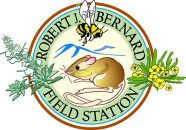Cummings, Keala S. (2009)
Rates of Seed Germination and Dormancy Predict Species Success in Invaded California Grasslands.
Bachelor of Arts, Scripps College, Organismal Biology and Ecology.
Advisor: Diane Thomson.
Although historically most explanations of how invasive plants come to dominate native communities have focused on competition for resources such as water or nitrogen, a number of recent papers have put forward new ideas about the potential roles of seed limitation and dormancy. Some recent work suggests that many native plants are limited in invaded habitats by past disturbance leading to a lack of seeds in the seed bank and by poor seed dispersal; not direct competition. A second set of studies have predicted that some natives are better able to persist in invaded habitats because of greater seed dormancy, which facilitates persistence via the storage effect. I tested for evidence of both these mechanisms in an invaded grassland by characterizing the composition of the seed bank, the timing of germination in invasive and native species, and the ability of seeds to remain dormant. Samples of the seed bank were collected and germinated in the lab under a series of trials that simulated three conditions: 1) fall, low rainfall, 2) winter, high rainfall, 3) winter, very high rainfall. The abundance of emerging seedlings were then compared to seedling abundances in the field in November, December and February of 2008 and 2009. I also tested the germination rates of seeds collected in 2005 with seeds collected in 2008. I found that invasive species in this habitat germinated more quickly than native species and in greater numbers. Among the native species, those that were more common in the field were also more abundant in the seed bank, had higher germination rates and tended to emerge earlier than those with lower field abundances.
